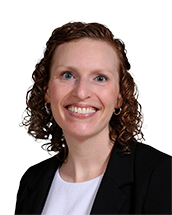

The Journey to Teaching
Think back to your time as a student sitting in math class. What memory or feeling comes to mind? Perhaps you perked up, and positive memories started rushing in, or perhaps you started sweating.
Though I am a math consultant who can say with absolute certainty that I love math and learning, I can also tell you with certainty that as a middle schooler, I would have started sweating if someone told me that I would take on a career as a math teacher, and later a math consultant. For me, math was abstract, full of tricks, and riddled with formulas and procedures that felt disconnected. My path to discovering joy and beauty in math was not linear. A breakthrough occurred when I finally found my confidence and was challenged to understand, question why, and see the connections and applications of math concepts.
This experience shaped how I would teach math, but it did not happen overnight. A mindset of continuous growth has kept me focused on my mission to help all students see the joy and beauty in math. And while I had a phenomenal experience in my undergraduate teacher preparation program, I have had to continue growing and learning beyond the program.
Same Math, Different Approach
Math is not changing, do not worry. However, the approach to teaching math is. The Common Core State Standards for Mathematics (CCSS) and the recently updated Wisconsin Standards for Mathematics emphasize conceptual understanding, shifting from a dependence on algorithms and rote memorization to, instead, "flexibly and efficiently" use strategies to calculate and reason. Furthermore, the eight Standards for Mathematical Practice, spanning K-12, establish the expectation that students think critically, problem solve, reason, persevere, and communicate effectively as mathematicians.
As a new teacher, I learned pretty quickly that if I continued to teach the way I learned, first, I would not engage my students, and, second, I would not meet the expectations that the CCSS and the state of Wisconsin established. I had to keep learning and growing professionally. My school district provided an excellent means to access the professional development that would continue to have a positive impact on my teaching.
Professional Development, An Important Constant: Three Reasons Why
Content Knowledge Remains Fresh
If I asked you to calculate 15×13 without using a calculator, might you try to visualize the algorithm in your head? Multiply, carry the 1, place the 5… Would it feel like a relief if I shared a strategy to make the calculation easier? Try breaking apart the 13 into 10 + 3. Can you quickly determine the product of 15 and 10, and 15 and 3, and then add them together? Relief.
Imagine teachers having these kinds of conversations about the standards they teach at every grade level. This sharing of ideas can be transformative and eye-opening.
Instructional Strategies Improve
Have you heard the definition of insanity? Doing the same thing over and over again and expecting different results. Collaborating and learning new techniques, even small shifts, for engaging students is powerful. Is the "I do, we do, you do" model for learning applicable to math? If not, what does it look like instead? How should students learn math? Engaging in professional conversations can unlock different ways to engage students during instruction.
Build A Strong School Culture
By engaging in professional development, we must collaborate, reflect, and be vulnerable with our peers. Doesn't this sound just like the expectations the eight Standards for Mathematical Practice establish for our students?! Through conversation and shared learning, we create a shared school vision for learning excellence.
Have you heard of the Wisdom of the Crowd? It states that the collective expertise of a group is more accurate and insightful than the expertise of an individual. Simply, we are better together, and our students are better off because of it. Professional development empowers teachers by equipping them with effective learning strategies, knowledge of content standards and their progressions, and instructional tools to meet the needs of all learners.
A recent article published by Wisconsin Public Radio reminds us that continuous improvement beyond teacher preparation programs is important. How is your school or district igniting teacher collaboration and growth?

Tara Woldt, a Math & STEM Consultant at CESA 6, has 14+ years of education experience as a secondary math teacher, teacher leader, and instructional consultant. She provides expert coaching and professional development focused on engaging students as mathematical thinkers. Her work is driven by a passion for helping schools create engaging, collaborative classrooms where all students can find confidence in math.

Comments